
A Salute to Internationally Recognized Nematologist Howard Ferris
UC Davis Nematologist Receives Honorary Member Award, Highest Award Given by Society of Nematologists

UC Davis Distinguished Professor Emeritus Howard Ferris, internationally recognized for his “exceptional, wide-ranging and unparalleled contributions to nematology” over a 64-year career, is a newly elected Honorary Member of the Society of Nematologists (SON), the international organization’s highest award.
Ferris received the award at SON’s 63rd annual conference, held in Park City, Utah.
"Howard's contributions and dedication to the discipline of nematology are remarkable in their impact,” said UC Davis Distinguished Professor of Nematology Steve Nadler, former chair of the Department of Entomology and Nematology, and a member of the nominating team.
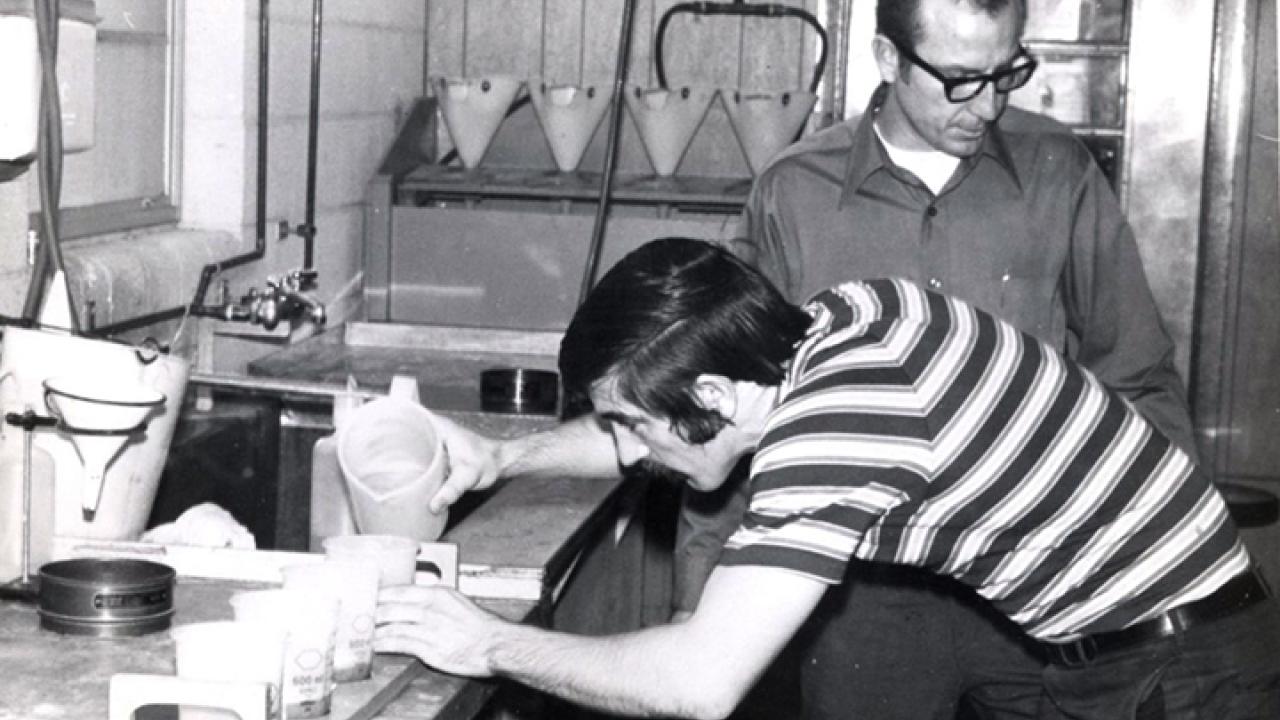
The SON award, first given in 1968, is an honor achieved by only 2 percent of the membership. Ferris, who served on the UC Davis faculty for 36 years, is the 36th nematologist and the third UC Davis faculty member to receive the honor. SON awarded UC Davis professor Merlin Allen (1912-1974) the honor in 1970, and Dewey Raski (1917-2014) in 1988.
UC Davis Distinguished Professor Emeritus of Entomology Frank Zalom of the Department of Entomology and Nematology and director of the UC Statewide Integrated Pest Management Program (UC IPM) for 16 years, and a past president and Honorary Member of the Entomological Society of America, said Ferris is “perhaps the premier IPM research nematologist of our time.”

“I came to know Howard when he was a member of the UC IPM Management Program’s first Technical Committee in 1981,” said Zalom, lauding his "brilliance and enthusiasm."
“His conceptual understanding of the ecological role of nematodes in plant agricultural systems established him as perhaps the premier IPM research nematologist of our time," Zalom said. "His fundamental and practical contributions to the science of nematology and to IPM are many, and will have lasting impacts.”
Leading Expert. UC Davis nematologist and associate professor Shahid Siddique, who joined the faculty in 2019, described Ferris as a “leading expert in the field. He has been a remarkable influence in nematology, particularly in nematode ecology. His pioneering research has not only deepened our understanding of nematode ecosystems but has also set the standard for ecological studies worldwide, making him a leading expert in the field.”
“Dr. Ferris has devoted most of his adult life to the field of nematology,” according to the SON statement read at the awards ceremony. “Similar to the ecological concepts that are central to much of his work, his research record of over 200 peer-reviewed publications has created a web of connections that touch a huge number of nematologists across the world.”
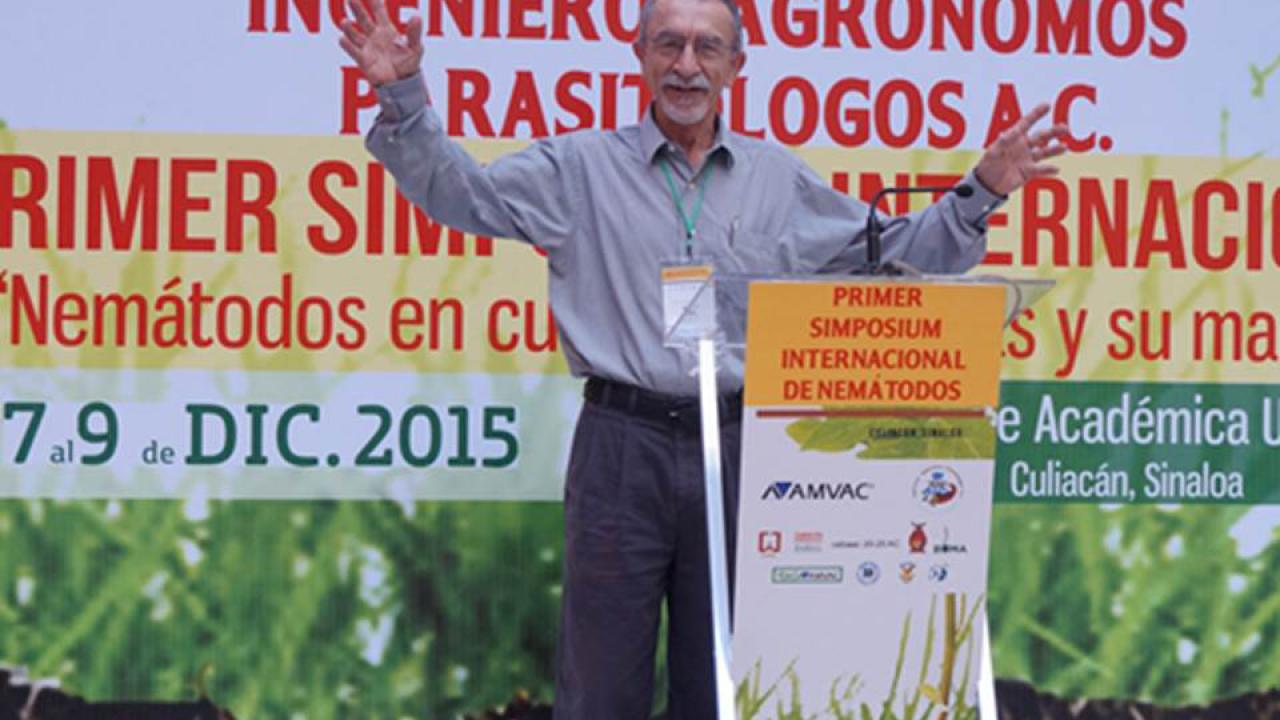
Ferris, who transitioned to emeritus in 2014, developed and continues to maintain Nemaplex and Nemabase, “two of the most important online nematology resources available,” wrote the trio of nominators, Inga Zasada, USDA-ARS research plant pathologist, Oregon State University; Professor Larry Duncan, University of Florida; and Nadler. “It is unlikely that there is a nematologist in the world that hasn’t used the online resources that Howard created.”
“A curious student or an established nematologist who has forgotten something can find what they need in Nemaplex,which covers all things nematode including taxonomy, methodologies, biology, ecology, management,” the nominators wrote, adding that it is a “virtual encyclopedia of nematodes…There are also online tools for selecting cover crops and making economic threshold decisions.”
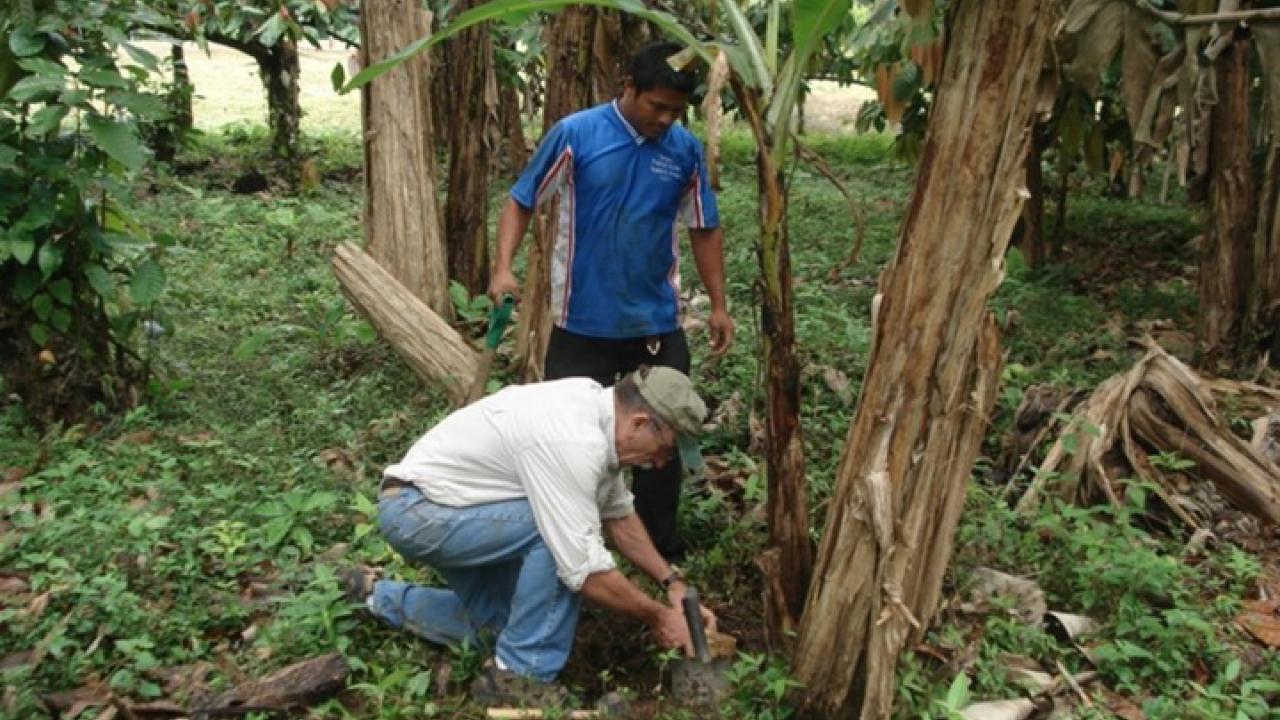
Definition of Nematodes. Ferris defines nematodes as "unsegmented roundworms; they inhabit freshwater, marine and soil environments, in fact almost any environment that provides sources of carbon and water. Many are free-living, feeding on microbes and on small animals and plants and so contributing to critical ecosystem services such as nutrient cycling and regulation of communities. Others are important parasites of plants and animals, including humans. Estimates, although difficult to substantiate, are that 80 percent (4 out of 5) multicellular animals on the planet are nematodes. That is numbers of individuals, not numbers of species.”
Ferris launched Nemaplex in 1987, and since his “retirement,” devotes at least three days each week to developing it and associated databases. The online resource covers the biology, ecology, and management of plant and soil nematodes.
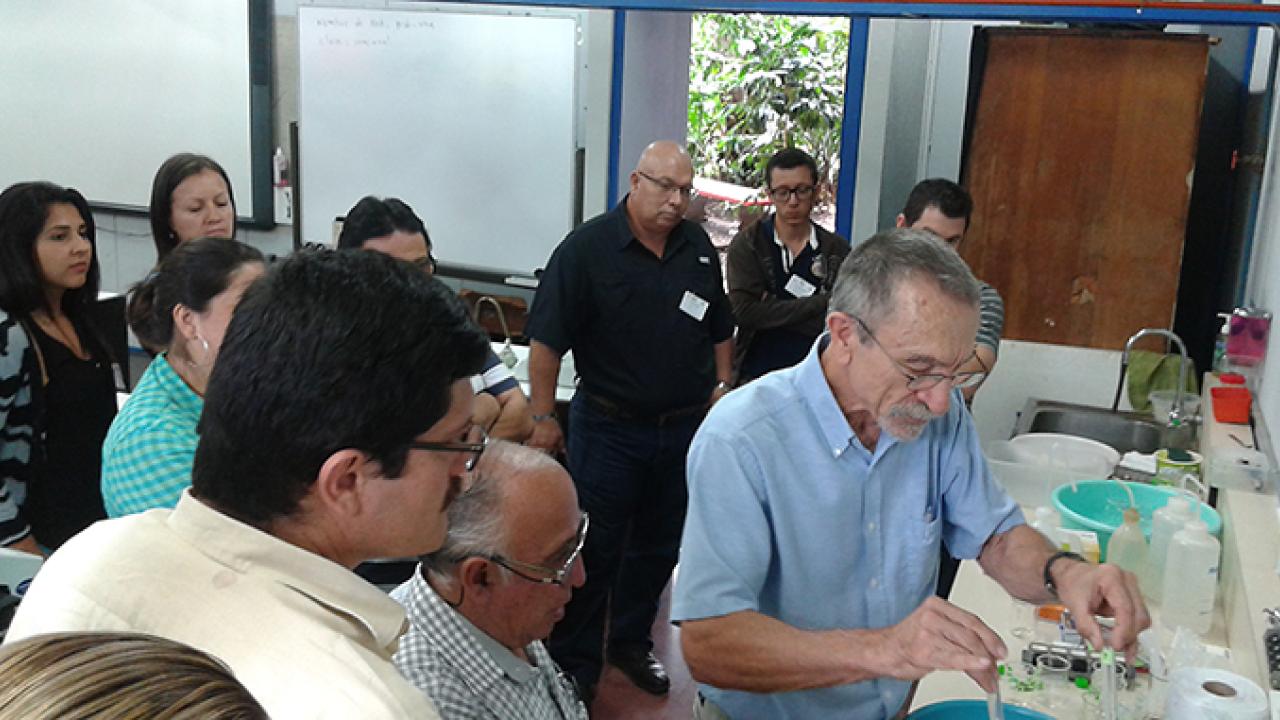
Ferris began his career in nematology as a research scientist for the Tobacco Research Board of Zimbabwe, and then obtained his bachelor’s degree in botany and zoology in 1964 from the University of London; his nematology diploma in 1965 from the State Agricultural University, Wageningen, Netherlands; his master’s degree in zoology in 1968 from the University of London; and his doctorate in plant pathology in 1972 from North Carolina State University.
Ferris launched his academic career in 1972 as an acting assistant nematologist at UC Riverside, advanced to professor in 1983, and then accepted the vacant chair position at UC Davis in 1985. He chaired the Department of Nematology (now the Department of Entomology and Nematology) for nine years. Over his career, he has mentored 20 postdoctoral fellows and visiting scientists and 11 doctoral and master’s students.
What sparked his interest in nematology?
“It was a mixture of luck and available opportunity,” he says. “Of course, in the process I grew to love the discipline, which is fortunate since it is all that I have been doing for 64 years!”
Born in England, Howard emigrated with his family to South Africa in 1946 and to Zimbabwe (then Rhodesia) in “about 1950.” His family moved to New Zealand six years later, then returned to Zimbabwe in 1958. He finished high school there in 1960.

“I needed financial support for college so I applied for various scholarships,” Ferris related. “I was put on a short list (for a scholarship) by the Tobacco Research Institute in Zimbabwe.
“They assigned me to the nematology--random choice, I think, because I knew very little about nematodes,” he quipped. “After some assigned reading, I was tasked to test the host status to root-knot nematodes of weeds growing in tobacco fields.”

Course at Wageningen University. Ferris received the scholarship, which required him to work in the Department of Nematology each summer during college, and three years after graduation. “During that three-year period, I was sent to The Netherlands for three months to attend an international nematology course at Wageningen University. After that, I conducted research in Zimbabwe for a master’s degree as an external student of the University of London.”
“With the impending demise of the Zimbabwe tobacco industry and downsizing of the research institute, I was recommended for an assistantship in a PhD program at North Carolina State University.” The academic positions at UC Riverside and UC Davis followed.
Over the years, his research interests evolved into IPM and then into soil ecology and agricultural sustainability. However, his current and long-term passion is updating and expanding his Nemaplex website.
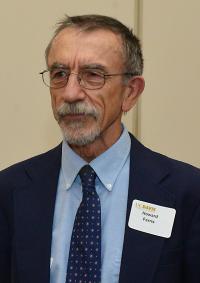
“It’s sort of like the stamp collection that I thought I would curate when I retired,” he commented.
"Following on his first publication in 1969, Howard has published 221 additional peer-reviewed papers,” his nominators wrote. “More than 30 of his publications have received over 100 citations. Two of his most notable publications in nematode ecology (Ferris et al. 2001; Bongers and Ferris 1999) each have around 1,500 citations and are both seminal works on soil food webs and the indices that are used to analyze them. Many of Howard’s publications present complex theoretical thinking on how to quantify the impact of nematodes on soil function and agriculture. The faunal analysis proposed by Ferris et al. (2001) A Framework for Soil Food Web Diagnostics: Extension of the Nematode Faunal Analysis Concept was transformed in 2014 into an automated calculation system that can be used by any nematologist as presented in NINJA: An Automated Calculation System for Nematode-Based Biological Monitoring."
Expected His Students to Work Hard. “The amazing thing about being a student of Howard’s was that you could pursue any topic in nematology and know you were studying with the best,” the nominators wrote. “Howard was a demanding advisor and expected his students to work hard. At UC Riverside, Howard and Diana Wall maintained a ‘Thursday Night’ paper session attended by every nematology student every Thursday of their graduate programs. At UC Davis, Howard had lab meetings at 8 a.m. on Monday and 4 p.m. on Friday; attendance was mandatory. Howard does not hand out compliments readily. When at the end of a graduate program or 20 years into one’s career when Howard says he is proud of you or impressed by your research, it is the highest compliment that a nematologist can receive.”
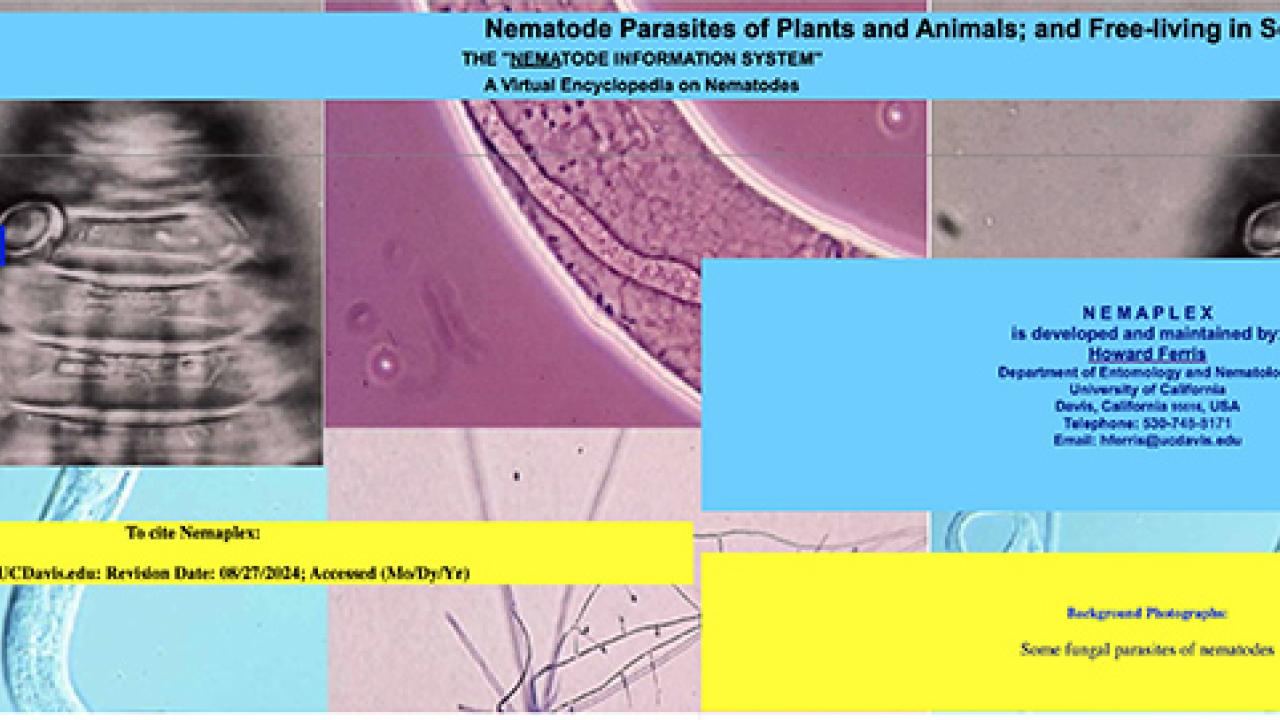
Ferris was elected a Fellow of SON in 1995, served as an associate editor of the Journal of Nematology in the 1980s, and organized SON’s 28th annual meeting at Davis in 1989, and SON’s 38th annual meeting in Monterey in 1999. He was selected a UC Davis Distinguished Professor in 2012. His other honors include the 1984 Ciba-Geigy Recognition Award for Excellence, presented at the First International Congress of Nematology, Guelph, Ontario, Canada; and the 1983 Dimock Lecture at Cornell University.
Keynoted Symposia in 7 Countries. His curriculum vitae also includes Honorary Research Fellow, Bioversity International since 2013; and a graduate school affiliate professor at Centro Agronómico Tropical de Investigación y Enseñanza (CATIE) Costa Rica, since 2011. He has keynoted symposia in the United States, Scotland, Australia, Brazil, The Netherlands and South Africa, and delivered invited lectures in Belgium, Costa Rica, the United Kingdom, and Spain and Mexico, among others. In addition, he has presented international short courses on nematode identification and soil ecology twice in Costa Rica, and also in Nicaragua and Mexico.

“I am honored to have been associated with graduate students, postdoctoral fellows and visiting scientists who have enriched my career and have gone on to be very successful and productive in their own careers as researchers, teachers and leaders in various fields of endeavor,” Ferris said.
What does he do in his leisure time?
“I’ve been a lifelong-- but very slow--runner which would now be better described as a shuffler,” he joked. In fact, he’s run the Comrades Marathon in South Africa several times, and "a few 50 milers in California"--the California International Marathon 20 plus times; and the Western States 100.
He and his wife, Cynthia Hayes, a retired adjunct professor of criminal justice at Sacramento State University and a retired private investigator, reside in Shingle Springs. His goals? “Stay happy and healthy, continue to enjoy UC Davis and to continue to develop Nemaplex!”
